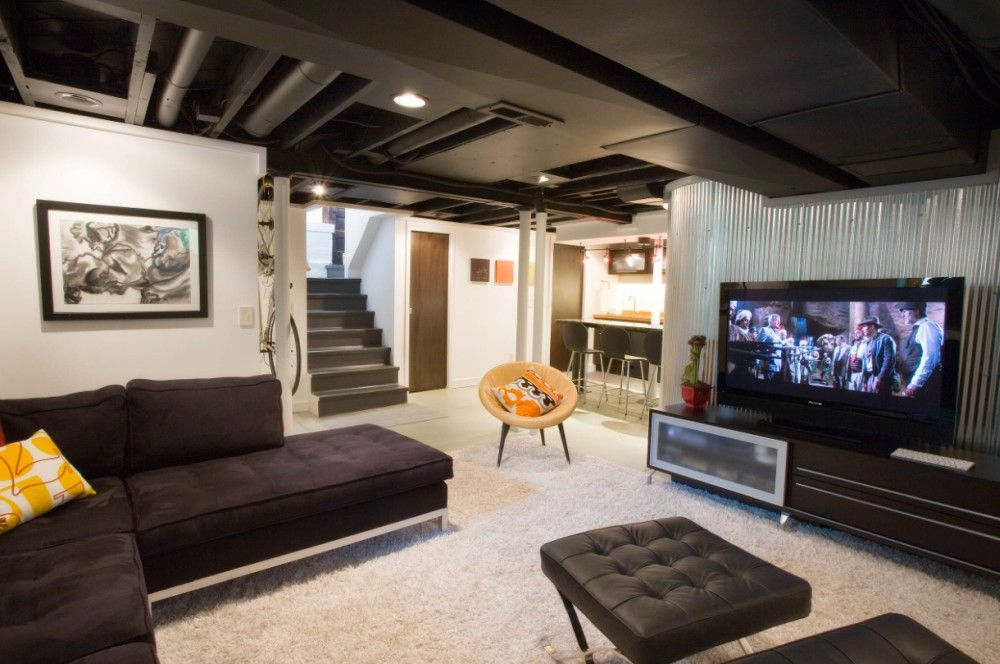Page Contents
What is the noise problem?
The most common noise issue when trying to soundproof a bedroom from a basement is loud music, voices, footsteps and bass coming up through the floor. Hard surface floors like concrete or tile in basements allow noises to easily travel to rooms above. Even carpeted basements can transfer significant noise through ceilings due to the direct contact between the floor and ceiling. Soundproofing a basement ceiling can reduce noise transfer dramatically and allow those on upper floors to sleep undisturbed.
How does sound travel between floors?
Sound waves travel very efficiently through solid materials. When sound hits the hard floor of a basement, the acoustic energy causes vibrations that travel directly into the ceiling above. With nothing to stop it, noise passes through ceilings and floors unimpeded. Carpet and other flooring materials may absorb higher frequency sounds but do little to stop bass and vibrations from traveling to upper floors. The most effective way to stop noise transfer between floors is through physically decoupling the ceiling from the floor and adding mass to reflect sound.
Effective Soundproofing Methods
Here are the most effective methods for soundproofing a basement ceiling to prevent noise transfer to bedrooms above:
Install a Floating Ceiling
A floating ceiling decouples the drywall from the basement floor joists to prevent transfer of vibrations. This involves using rigid foam boards or resilient channel between the ceiling drywall and joists. The foam or channels act as a buffer to dampen noise and vibrations. Installation steps include:
- Screw rigid foam boards to underside of floor joists
- Attach resilient channel perpendicular over foam
- Screw drywall sheets to resilient channel
Resilient channel is inexpensive and provides an air gap for extra sound blocking. Foam boards add mass and further dampen noise.
Add Mass Loaded Vinyl
Mass loaded vinyl (MLV) is a heavy, flexible vinyl material designed to block sound transmission. MLV lined with a decoupling layer works incredibly well for soundproofing ceilings. Installation steps:
- Glue mass loaded vinyl to rigid foam boards
- Screw foam boards with MLV to joists as described above
- The MLV adds significant noise blocking mass
The combination of decoupling foam and heavy MLV creates a very effective sound barrier. MLV also helps block lower frequency bass noise.
Install Safe N’ Sound Insulation
Safe n’ Sound is a specialty insulation made from dense fiberglass and fabric. It stops airborne noise while absorbing sound within the material. For ceiling soundproofing:
- Lay insulation blankets over joists and flooring
- Overlap seams and staple in place if needed
The dense insulation adds mass and damping while creating an air barrier to block noise. Safe n’ Sound works well alone or with other methods like MLV and resilient channel.
Use Green Glue Noiseproofing Compound
Green glue is a viscoelastic material that converts sound energy into heat. Using it between layers of drywall or other materials improves sound blocking. For ceiling application:
- Apply green glue to joists and foam board
- The glue helps bonded layers move independently to damp noise
Green glue is versatile and can be used with most other soundproofing methods. It adds damping and decoupling to reduce noise coming through.
How to Test Soundproofing Effectiveness
It’s important to test whether your soundproofing efforts adequately reduce noise coming from the basement. Here are some methods:
Noise Level Measurements
Use a sound level meter to measure ambient noise levels in the bedroom before and after soundproofing. This provides objective data to compare methods. Look for at least a 10-15 decibel reduction.
Noise Source Testing
Have someone make noise in the basement, like playing music. Listen from the bedroom to subjectively assess how well you can hear bass, voices, footsteps compared to before. Dramatic reductions indicate success.
Impact Noise Testing
Drop or bounce heavy objects on the basement floor and listen upstairs. Less impact noise indicates effective decoupling between floors.
Testing allows fine-tuning additional soundproofing if needed. Subjective impressions also help determine if a bedroom is suitably quiet for restful sleep.
Soundproofing Bedrooms Over Basements Costs
Here are typical price ranges for materials to soundproof a standard 12×12 ft. basement ceiling:
| Item | Cost |
| Resilient channel | $100 – $300 |
| 5/8″ Drywall | $100 – $300 |
| 4×8 Ft. Rigid Foam | $50 – $150 per sheet |
| 12″ x 50′ Mass Loaded Vinyl | $99 – $200 per roll |
| Safe n’ Sound Insulation | $250 – $450 |
| Green Glue | $100 – $250 per case |
| Tools / supplies | $50 – $200 |
Professional installation costs $2,000 to $4,000 more. DIY provides significant savings but requires carpentry skills. Blocking floor noise is well worth the investment to create quiet, peaceful bedrooms for better rest.
Conclusion
Disrupting noises from basement recreation or business uses can make bedrooms above nearly uninhabitable. Luckily, affordable soundproofing methods like floating ceilings, mass loaded vinyl, safe n’ sound insulation and green glue can dramatically reduce noise coming through the ceiling. Test results confirm a tightly sealed, decoupled ceiling with added mass blocks most footsteps, voices, music bass and other noise. With reasonable effort and investment, basement ceiling soundproofing provides occupants upstairs with the quiet comfort needed for undisturbed rest and relaxation.
